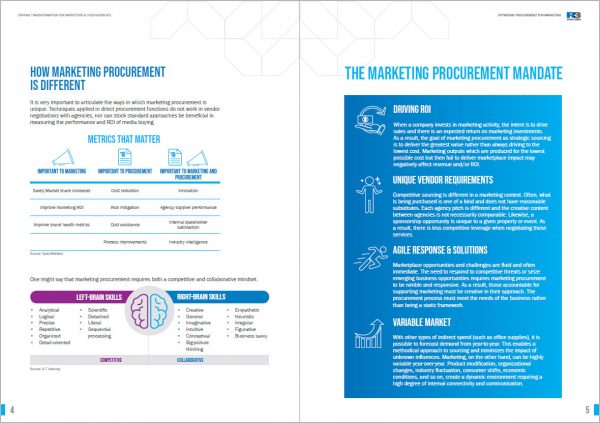Procurement has seen tremendous advancement in the last decade. From being managed by each line of business without much visibility across other departments to functioning as advisors to the C-suite, procurement teams have had to shift from doing tactical work to delivering strategic insight.
In marketing, procurement is growing into its role as marketing’s “first line of defense,” and this has made it more present and valued as a central part of any successful marketing operation. Transparency, data privacy, ownership and talent costs can impact brand reputation and operations, and as a result, procurement’s responsibilities include protecting marketing from increasing instances of fraud in digital and media buying; ensuring contracts are aligned on scope and requirements; assuring transparency in vendor selection; and finding ways for savings to be cycled back into marketing initiatives.
In our experience working with marketing and procurement teams, we have seen that a mutually supportive relationship between both parties cannot be underestimated. Alone, procurement might have a stronger focus on cost, risk and process, while marketing looks to deliver on sales and brand. Together, they drive overall brand innovation, performance and intelligence. Achieving this requires collaboration, clear lines of communication, accessibility to new technologies, and joint goals – for without a common purpose true integration is not possible.
CONTENT
- The marketing procurement difference
- Four common challenges when integrating marketing and procurement functions
- Case studies on strategic sourcing, spend visibility and transparency, supplier management, process improvements, agency review, remuneration model, agency model creation
- Best practice for a solid foundation


